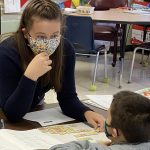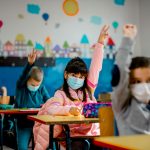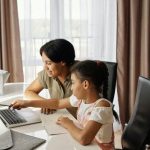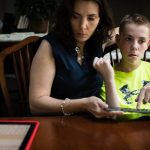“School assignments that a student is expected to do outside of the regular school day—that’s homework,” says Sandra Chafouleas, a UConn Board of Trustees Distinguished Professor at the Neag School of Education. “The general guideline is 10 minutes of nightly homework per grade level beginning after kindergarten. This amounts to just a few minutes for younger elementary students to up to 2 hours for high school students.”
As a psychologist and a parent of children participating in youth sports, it has been exciting for me to witness the increasing media attention on mental health and athletics. Mental toughness has long been a central topic within sports circles, but the current discussions are different. The past year has brought the mental health and well-being of athletes into mainstream conversation, whether it be as a plotline in season two of Apple TV’s “Ted Lasso” (promise, no more spoilers!), professional athletes’ stories highlighted during World Mental Health Day, or Simon Biles’ withdrawal from events at the Tokyo Olympics.
Even before COVID-19, as many as 1 in 6 young children had a diagnosed mental, behavioral or developmental disorder. New findings suggest a doubling of rates of disorders such as anxiety and depression among children and adolescents during the pandemic. One reason is that children’s well-being is tightly connected to family and community conditions such as stress and financial worries.
“As many schools in the U.S. figure out how to safely and fully resume in-person instruction, much of the focus is on vaccinations. But there’s another type of ‘vaccine’ that may be beneficial for some returning K-12 students that could be overlooked. Those are known as ‘behavioral vaccines.'”
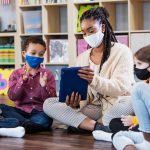
For educators, families, and communities, April is bringing a welcome sign of hope to a year of unchartered challenges as political unrest, COVID-19, social and racial disparities, and violence have disrupted and dismantled our schools’ traditional approach to education. The appointment of Miguel A. Cardona as the 12th Secretary of Education and the passing of the American Rescue Plan of 2021 does make it feel like spring, in fact, has sprung. The possibility of equitable school environments for our nation’s children appears tangible, however, recovery must attend to more than filling holes with intent to return to a “new normal.”
Students desperately need support as they try to overcome current challenges to academic learning, physical health, and social-emotional connection. Meanwhile, school leaders must focus on coordinating policies and practices that put equitable structures in place for every child. While the necessary federal leadership and funding provide necessary first steps to tackling multiple points of support to the education infrastructure, we propose that schools reopen not with a “new normal,” but a “better normal” — one where we carry out only a few highly effective actions really well.
Imagine what would happen if a preschooler didn’t “use their words” when they got upset about sharing, instead stomping around yelling while adults simply observed in silence. Think about what the school climate would feel like if a student punched another during recess while others watched without seeking help.
Now consider the actions – and inactions – by Trump Jan. 6 as the electoral vote counts occurred at the U.S. Capitol. Those behaviors show a desperate need for social emotional learning.
When 2020 began, we had no clue as to the changes coming to our children’s education. Looking to the new year, the only thing that seems certain is that uncertainty in school opportunity, format, and structure will continue as the conditions around us adjust. School will carry on as unpredictable and unprecedented.
Children don’t come with how-to manuals. Even if they did, they would all require a manual of their own, tailored to their unique make and model. That’s why caregiving can be rewarding, as well as puzzling and demanding – particularly for family caregivers of children with disabilities. Although these caregivers often report that the role gives them a sense of purpose, it usually comes with physical, emotional and financial strains. COVID-19 has added major hurdles to accessing, delivering and evaluating special education services.
The pandemic is bringing an atypical holiday season this year, presenting change in the things we do, the way we do them, and who we do them with. We may miss out on getting together in person with family and friends, traveling to cherished places, or taking part in our traditional celebrations. Forced upon us, these unfamiliar changes can evoke feelings of loss and frustration.
News headlines seem to suggest consensus about how bad the debate was, some deeming it the worst in presidential history and an embarrassment to society. The theme of many stories covering the event can be summed up in a single word: dysfunction. Dysfunctional debates are characterized by not listening, jumping in and cutting others off, grandstanding, boasting, using sarcastic or biting tones, and not acknowledging others.
